DNA From The Beginning
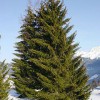
Christmas Tree Science
Dec 21st
We have several holiday traditions at my house, which include baking cookies, decorating the house, and of course the tree. I have a love-hate relationship with my Christmas tree every year. Not a holiday season goes by without me cursing the tree and its insidious needles throughout the house. Oh, and don’t forget the ornaments that the dog just can’t keep out of her mouth. But the smell of the tree is all I need to get in the holiday spirit!
Interestingly enough, the Spruce, a very common Christmas tree species, has seven times more DNA than a human. How is that, you More >
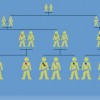
The Confusion About Adaptation
Dec 7th
One of the most difficult concepts to teach anyone is the relationship between evolution and adaptation. The majority of people I have worked with, both adults and children, are confused about this to some extent. Let’s first create a simple story to frame our discussion.
Once upon a time, in a forest with leaves and soil on the ground, there is a family of rabbits. Many animals live in this forest, including several predators for the rabbits. The mom and dad are both brown rabbits and most of their rabbit children are also brown. One of the children was born with More >
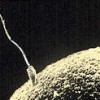
Some Cells Have 23 Chromosomes
Nov 25th
It is a game of chance! With one spin of a wheel, X and Y chromosomes, represented by pink (X) and green ping-pong balls (Y), are passed from each parent to a child. When the wheel stops, the baby is either a boy or a girl – depending on which chromosomes were inherited. It is a simple, yet powerful tool that demonstrates basic chromosomal inheritance. It is easy to see that every time the wheel is spun, there is a 50/50 chance of having a boy or a girl.
Demonstrations with this wheel have led to some very interesting student responses and questions. I have More >
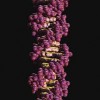
Does New DNA Always Mean New Traits?
Nov 10th
I was teaching a class of fifth grade students last week and we were discussing the characteristics of DNA and cells. As a group, we described how the human body is made up of a variety of cell types, including muscle cells, nerve cells, and more. I explained that although cells can be diverse in their appearance and functions, within one organism they all have the same DNA (except for mature red blood cells and gametes). The reason that a nerve cell is different from a bone cell is simply that they use different recipes in different ways.
A student then More >
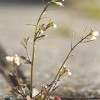
What’s in a Weed?
Nov 4th
If you’re a geneticist, it’s likely that your experiments are not on humans, even if you’re studying human diseases. This is a concept we spend a great deal of time discussing with the 5th-8th graders who visit the DNA Learning Center. It’s hard for a youngster, and many adults for that matter, to understand how a worm or a bug might have anything in common with a human, nonetheless anything worth studying!
The most mystifying of the model organisms is the plant. How could a scientist possibly learn anything about human genetics from a plant? One popular model from the plant More >
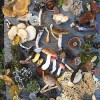
Diverse Proteins
Oct 14th
The instructions for life are carried in the DNA of our cells. All day long, our cells read the information in our DNA and make proteins. While DNA contains recipes for how life works, proteins are molecules that I consider the “doers” in our cells.
Protein is a broad category that includes enzymes and hormones. When you eat an apple, your body produces enzymes to break down that apple and build new products for your body. If you have a lot of glucose (a type of sugar) in your blood, the cells in your pancreas will read the gene for insulin More >
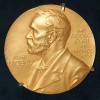
Ribosome Discoveries Recognized in 2009 Nobel Prize in Chemistry
Oct 7th
The 2009 Nobel Prize in Chemistry will be shared between Venkatraman Ramakrishnan, Thomas A. Steitz and Ada E. Yonath for discovering how ribosomes function at the atomic level.
Ribosomes are molecular machines composed of RNA and protein that perform the critical function of translating messenger RNA (mRNA) into protein. In other words, they transform the genetic code from a static list of instructions into dynamic entities that constitute life. As the Nobel Foundation’s announcement eloquently put it, “they build and control life at the chemical level.”
In a tour-de-force of atomic chemistry, Ramakrishnan, Steitz, and Yonath used X-ray crystallography to locate each More >
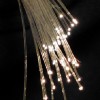
2009 Nobel Prize in Physics goes to Kao, Smith and Boyle
Oct 6th
Telecommunications were the subject of the 2009 Nobel Prize in Physics. This year’s award will be split between two discoveries that have had a broad impact on contemporary life – fiber optics and charge-coupled device (CCD) technology.
Charles Kuen Kao will receive half the Prize for laying the foundations of the modern fiber optic industry. In 1966, he calculated how to transmit light signals over long distances using glass fibers. To that point, traditional materials had only been capable of transmitting signals over short distances (i.e. 50 feet). Kao’s discovery demonstrated how to send signals over many miles. Four years later, More >

Blackburn, Greider and Szostak share Nobel for Telomeres
Oct 5th
Nobel Prize week kicked-off today with the announcement of the Prize in Physiology or Medicine. As predicted on these pages, Elizabeth Blackburn, Carol Greider, and Jack Szostak shared the award for discovering telomeres and telomerase. This is particularly good news for Cold Spring Harbor Laboratory, which was home to Carol Greider when she made the pivotal discovery of isolating the RNA gene that encodes for the telomeric template.
Carol Greider isolated the Telomeric Gene while at Cold Spring Harbor Lab
What is a Telomere? A telomere is a region (or cap) of repetitive DNA at the end of every chromosome that basically More >

Countdown to the 2009 Nobel Prizes…
Oct 1st
Nobel Prize week will kick-off on Monday (October 5th) with the announcement of the Prize in Physiology or Medicine. The prizes for Physics and Chemistry will follow on successive days, as the science world is treated to its annual brush with celebrity. Unlike the Oscars, however, we do not know the list of nominees and the whole election process is rather secretive. Deprived as we are of a list of formal candidates, I think it best to resort to wild speculation, conjecture, and rumor.
Physiology and Medicine…
The main contenders: Elizabeth Blackburn, Carol Greider, and (possibly) Jack Szostak The discovery: Telomeres and telomerase More >
